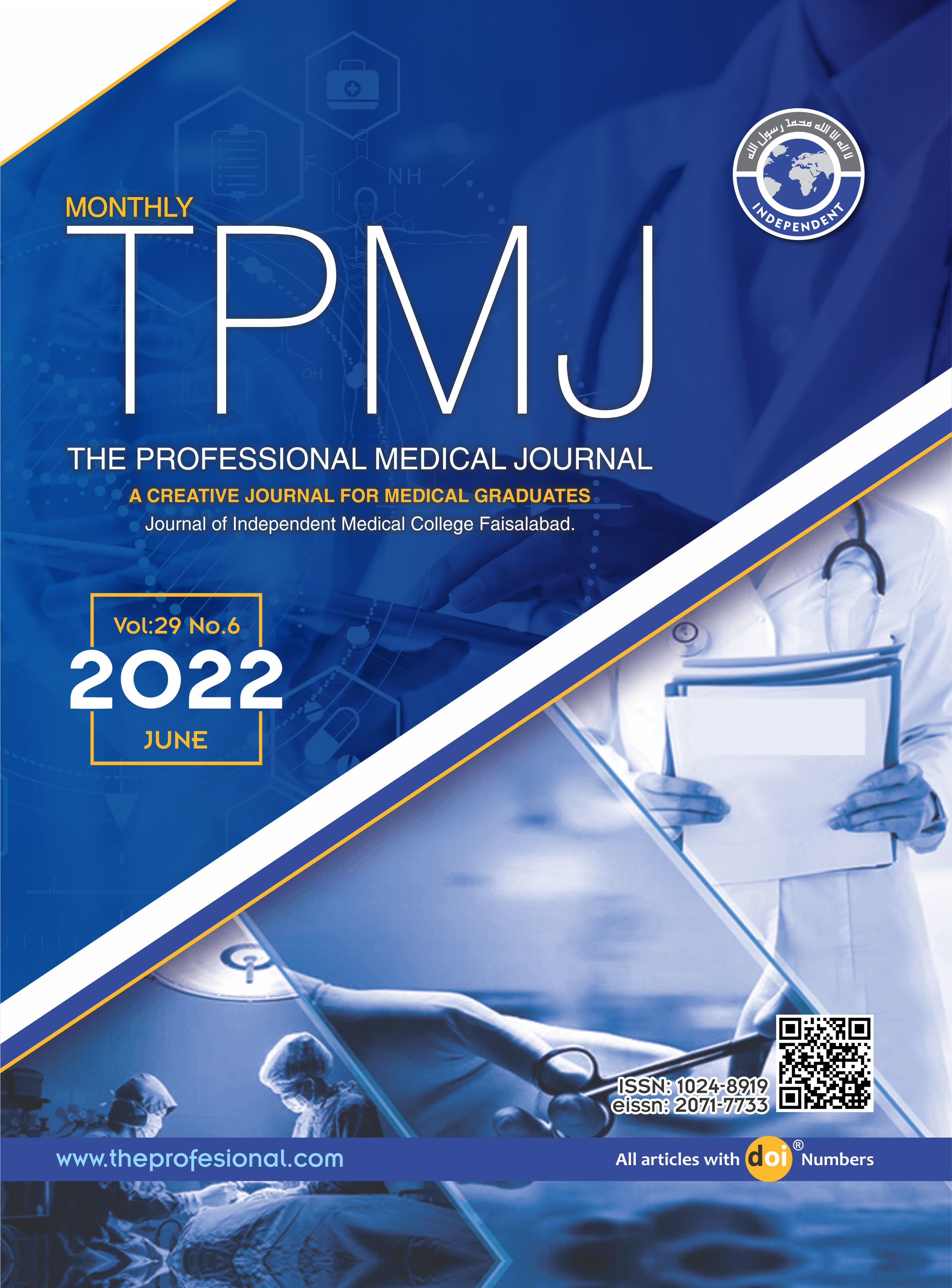Severity of myopia in children presented at KDA district head quarter teaching hospital Kohat.
DOI:
https://doi.org/10.29309/TPMJ/2022.29.06.6767Keywords:
Autorefractometer, Cumulatively, Myopia, PathophysiologyAbstract
Objective: To evaluate the severity and relationship of myopia with age of the children. Study Design: Descriptive Cross Sectional study. Setting: Eye OPD DHQ Teaching Hospital KDA Kohat. Period: January 2021 to June 2021. Material & Methods: The sample size was 200 children with myopia and the age limit was 5-19 years. To determine the severity of myopia in children of age limit 5-19 years presented at DHQ and teaching hospital Kohat, the children were included into the study based on the inclusion criteria, the cycloplegic refraction was done and then the spherical equivalent of the refractive error was recorded and based on that the children were categorised as having mild, moderate, high, and severe myopia. All the data was collected and processed through SPSS 23.0 software. Results: Cumulatively out of 200 participants, 98 children had mild myopia, 87 had moderate myopia, 10 had high myopia and 5 children had severe myopia. Mild myopia was mostly prevalent in children of age limit 8-10 years, moderate myopia was mostly prevalent in children of age limit 11-13 years, while high myopia was mostly prevalent in children with age limit 14-16 years, and severe myopia was mostly prevalent in children of age limit 17-19 years. Conclusion: It is clear from the results that the most prevalent type of myopia in children is mild myopia and myopia severity increases with increase in children age. As the myopia is the most common type of refractive error in children and high myopia is a major risk factor of blinding ocular condition so, the myopia type and severity should be recognized as soon as possible in children and should be managed to control the progression of myopia.
Downloads
Published
Issue
Section
License
Copyright (c) 2022 The Professional Medical Journal

This work is licensed under a Creative Commons Attribution-NonCommercial 4.0 International License.


